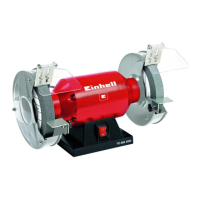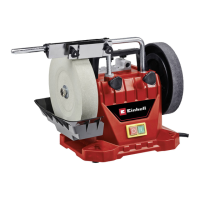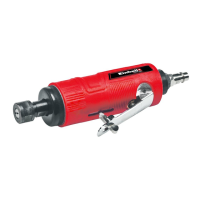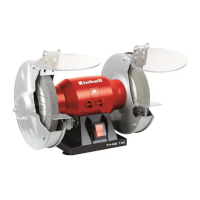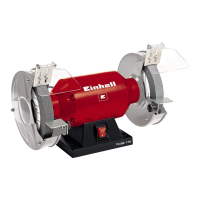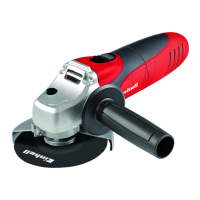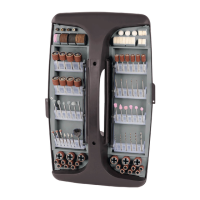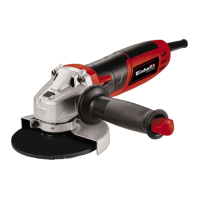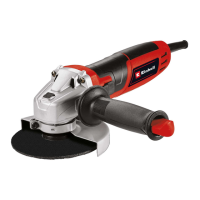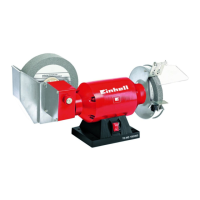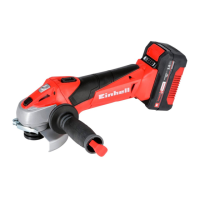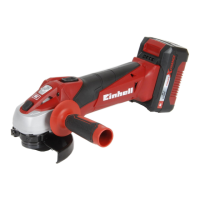GB
- 17 -
L
pA
sound pressure level ..................... 78.4 dB(A)
K
pA
uncertainty ............................................. 3 dB
L
WA
sound power level ....................... 89.4 dB(A)
K
WA
uncertainty .............................................3 dB
Wear ear-muff s.
The impact of noise can cause damage to hea-
ring.
Total vibration values (vector sum of three direc-
tions) determined in accordance with EN 60745.
Handle
Vibration emission value a
h
= 9.427 m/s
2
K uncertainty = 1.5 m/s
2
The stated vibration emission levels and stated
noise emission values were measured in ac-
cordance with a set of standardized criteria and
can be used to compare one power tool with
another.
The stated vibration emission levels and stated
noise emission values can also be used to make
an initial assessment of exposure.
Warning:
The vibration and noise emission levels may vary
from the level specifi ed during actual use, depen-
ding on the way in which the power tool is used,
especially the type of workpiece it is used for.
Keep the noise emissions and vibrations to a
minimum.
•
Only use appliances which are in perfect wor-
king order.
•
Service and clean the appliance regularly.
•
Adapt your working style to suit the appliance.
•
Do not overload the appliance.
•
Have the appliance serviced whenever ne-
cessary.
•
Switch the appliance off when it is not in use.
•
Wear protective gloves.
Caution!
Residual risks
Even if you use this electric power tool in
accordance with instructions, certain resi-
dual risks cannot be rules out. The following
hazards may arise in connection with the
equipment’s construction and layout:
1. Lung damage if no suitable protective dust
mask is used.
2. Damage to hearing if no suitable ear protec-
tion is used.
3. Health damage caused by hand-arm vib-
rations if the equipment is used over a pro-
longed period or is not properly guided and
maintained.
5. Before starting the equipment
Warning!
Always remove the battery pack before making
adjustments to the equipment.
5.1 Fitting the dust collection box (Fig. 2)
The dust collection box (3) must be pushed onto
the connector for the dust collection box (f).
Push the dust collection box (3) onto the equip-
ment until you hear it click clearly.
To remove the dust collection box (3), pull the
dust collection box to the rear and off .
The dust is extracted directly into the dust coll-
ection box through the abrasive paper and the
oscillating plate.
5.2 Fitting the dust extractor adapter (Fig. 3)
Slip the dust extractor adapter (4) onto the va-
cuum cleaner connector (f). Connect the dust
extractor adapter (4) to a suitable dust extraction
system.
Important!
For health safety reasons it is imperative that you
use a dust extraction system.
Important!
For health safety reasons it is imperative that
you use the dust collection box.
5.3 Securing sanding/grinding paper using a
clamp (Fig. 4-7)
Only use sanding/grinding paper of the appropria-
te size and suitable perforations.
•
Lift the lever (6) on the front of the orbital san-
der.
•
Insert the sanding/grinding paper as far as
possible into the open clamp and close the
lever again.
•
Place the sanding/grinding paper taut over
the orbital plate (5) and clamp it again using
the second lever (6) on the rear of the orbital
sander.
Anl_TC-OS_18_187_Li_Solo_SPK9.indb 17Anl_TC-OS_18_187_Li_Solo_SPK9.indb 17 20.02.2020 15:23:0220.02.2020 15:23:02
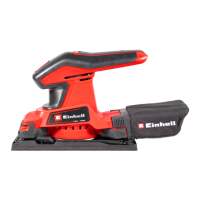
